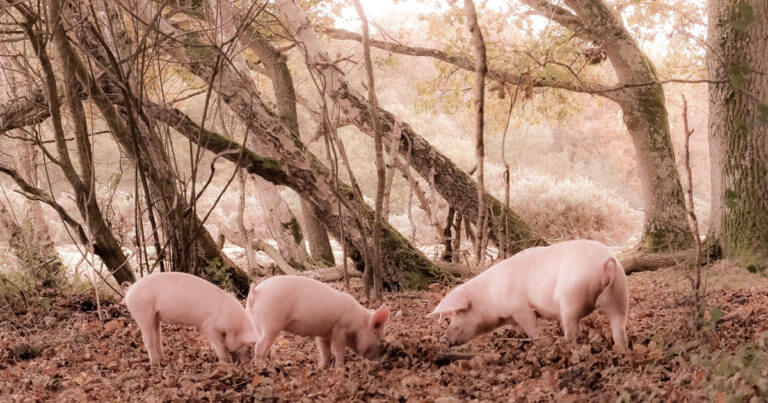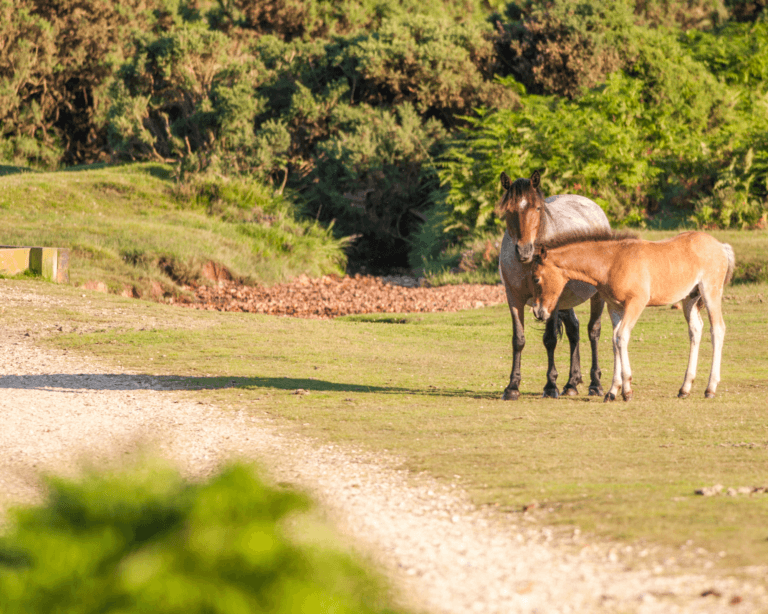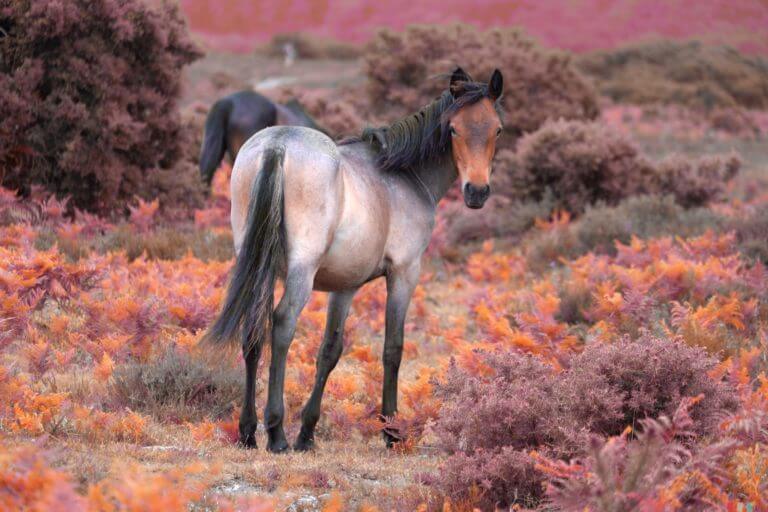Pannage: Introducing the helpful pigs of the New Forest
As the leaves turn from green to gold, the sound of snuffling can be heard deep in the heart of the New Forest National Park.
From the end of September every year, the forest’s famous ponies, cattle and donkeys are joined by domestic pigs, as commoners turn out their porkers to forage the forest floor for acorns, beech mast, chestnuts and crab apples.
Releasing pigs into the forest over autumn is known as pannage, a practice which has been abandoned in any parts of the country but is still observed every year in the New Forest.
The ancient tradition dates back to William the Conqueror, who created the New Forest as a royal hunting ground.
In the 19th century, as many as 6,000 pigs could be found foraging the forest floor, but today, the commoners – who own or occupy land in the New Forest – release around 600 pigs, which are all marked with identity tags in their ears.
Not only is foraging food great for peckish porkers, it’s also vital, as fallen acorns can be deadly to larger livestock – more than 90 Forest ponies and cattle have been known to die in just one season. This process lasts a minimum of 60 days and pigs can safely eat acorns as a large part of their diet however for ponies and cattle this food can make them unwell.
So not to get too carried away, each pig has several rings attached to their nose to prevent them from rooting too much which can cause damage to the grassland.
This natural diet so beneficial to their forest friends also gives a distinctive nuttiness to the pigs’ pork, which is marbled because of the exercise they get roaming free.
Whilst Pannage is very helpful for the environment, it also makes for a great photo! Keep an eye out for our greedy little friends when you’re next in the area.




